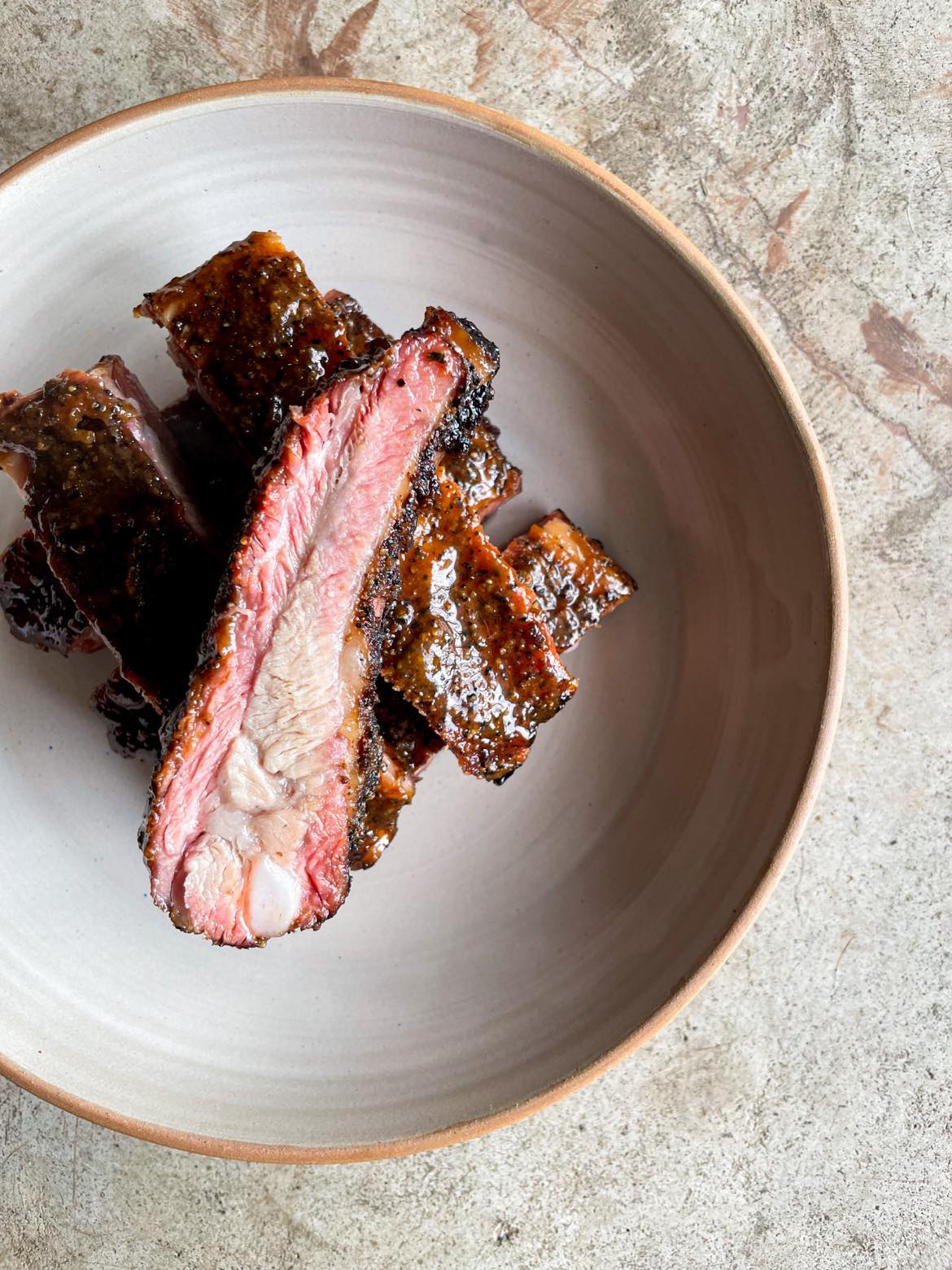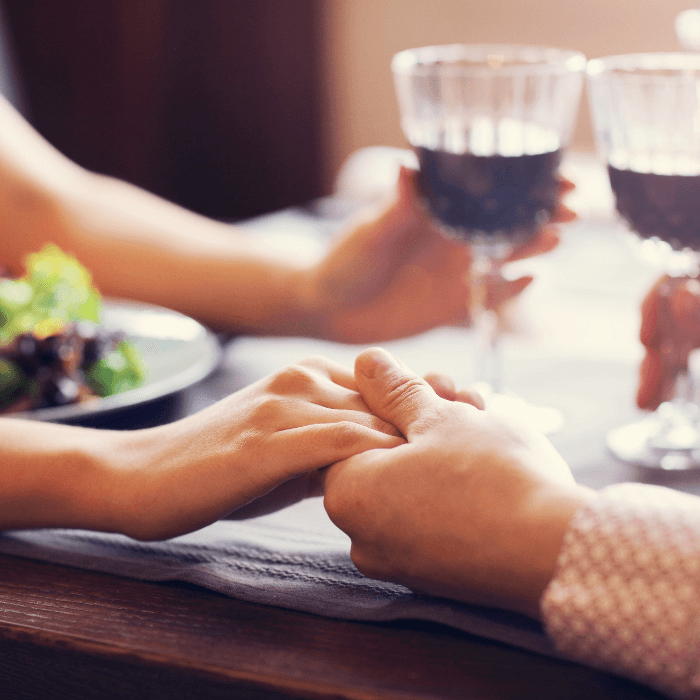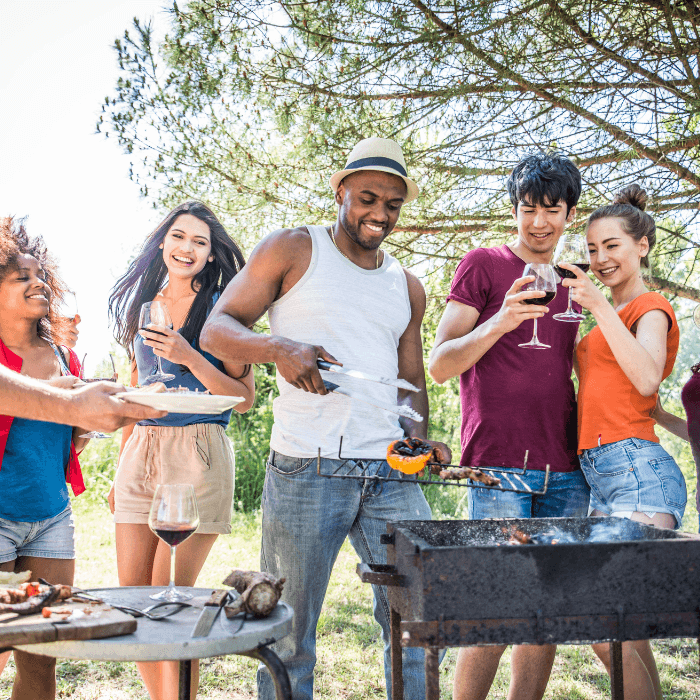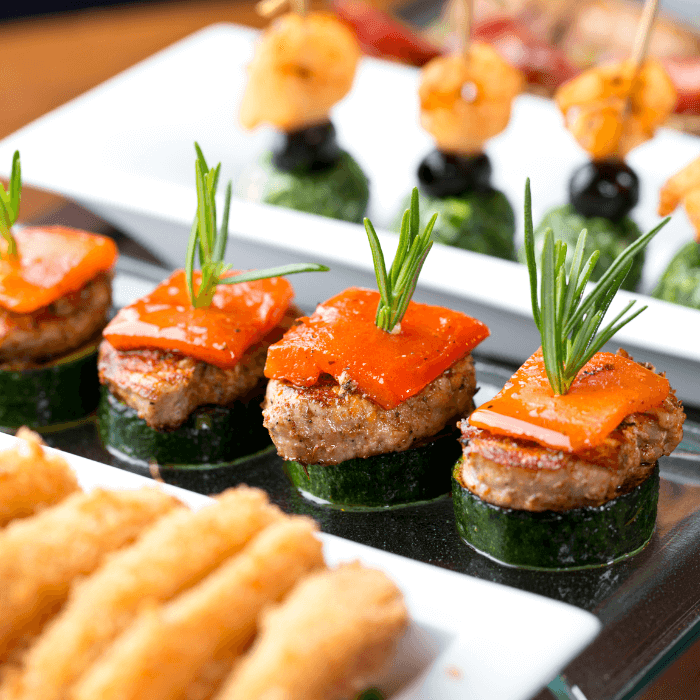St-Louis style ribs
Full rack of ribs (1kg), smoked and seasoned with our signature dry spice marinades, finished with our classic homemade barbecue sauce.
Ingredients: pork, salt, spice, sugar, mustard, barbecue sauce.
Preparation: Dip bag in hot water for 10 minutes, remove from water and bag and serve.
-----
Depending on the mood - limited edition.
- Regular price
- $37.00
- Unit price
- per
Couldn't load pickup availability.
-
Quebec Pork
-
Simple and decadent
-
Wood Smoke
Simplicity tastes much better.
Easy to prepare, delivered right to your door, what more could you want for a BBQ feast?
One product, 100 opportunities.
The inseparables
-
Ribs and grilled corn
-
Spare ribs and potato salad
-
Smoked ribs and Brussels sprouts

Questions for the chef.
Why boil the ribs?
Why boil the ribs?
Boiling ribs before cooking is a technique used for several reasons:
- Tenderize the meat: Boiling softens the muscle fibers and dissolves some of the collagen, making the ribs more tender and chewy.
- Reduce cooking time: Boiling ribs before grilling or baking reduces the overall cooking time, as the meat is already partially cooked during the boiling process.
- Remove excess fat: Boiling can help remove some of the excess fat, which can make the ribs less fatty and healthier.
- Allow better penetration of marinade: Boiled ribs can absorb marinade or sauce more easily, which can improve the flavour of the final dish.
However, boiling ribs can also take away some of their natural flavour. To retain flavour and achieve a tender texture, it is best to cook them slowly at low temperatures, using methods such as smoking, sous vide cooking or stewing.
How to make good ribs?
How to make good ribs?
If you are brave enough to try your own ribs in the smoker, follow these steps. Otherwise, if you don't want to go through the time-consuming preparation, you can get ours right here, or even try our beef brisket.
- Preparation: Remove the silver membrane from the back of the ribs for better tenderness. Mix your favourite spices and rub the ribs generously with the spice mixture to season them.
- Rest: Let seasoned ribs rest for 30 minutes to 1 hour to allow the spices to penetrate the meat.
- Slow cooking: Preheat your oven, smoker or barbecue to low (about 225-250°F or 110-120°C). Place the ribs on a rack, with a plate to catch the juices underneath.
- Cooking: Cook ribs on low for 2-4 hours, turning and basting with barbecue sauce every 30 minutes to 1 hour, until tender and meat falls off the bone easily.
- Finishing: If desired, finish the ribs on a hot grill or under the broiler to caramelize the sauce and add a nice golden color. Watch carefully to avoid burning the ribs.
- Rest: Let ribs rest for 10 minutes before carving to allow juices to redistribute.
- Serve ribs with additional toppings and sauces, if desired.
The key to tasty ribs is to cook slowly at low temperatures, which allows the meat to become tender and juicy while developing a deep, rich flavour.
How do I know if the ribs are done?
How do I know if the ribs are done?
Here are some tips to determine if ribs are cooked through:
- Fork Test: Prick the ribs with a fork; if the meat is tender and falls apart easily, they are probably done.
- Bone Test: Look at the bones of the ribs; if the meat has shrunk and the bones are exposed for about ¼ of an inch (0.6 cm), this usually indicates that the ribs are done.
- Flexibility Test: Grasp the ribs with a pair of tongs at one end and gently lift them. If they bend easily and the meat begins to crack on the surface, they are done.
- Internal Temperature: Use a meat thermometer to check the internal temperature of ribs. Insert the thermometer probe between the bones without touching any bones. The ideal internal temperature for well-cooked ribs is about 190-203°F (88-95°C).
Keep in mind that these tests are general indicators and that the best way to know if the ribs are cooked to your liking is to cook them slowly at a low temperature and to monitor them carefully during cooking.
Why remove the membrane from the ribs?
Why remove the membrane from the ribs?
It is recommended to remove the membrane from ribs for several reasons:
- Tenderness: The membrane, also known as the silver membrane, is a thin layer of connective tissue that can be tough and difficult to chew. Removing it will result in softer ribs.
- Spice and flavor penetration: The membrane can prevent spices and marinades from penetrating deeply into the meat. Removing the membrane allows the flavours to penetrate the ribs better.
- Even cooking: The membrane can sometimes shrink and contract during cooking, which can lead to unevenly cooked ribs. Removing the membrane will promote more even cooking.
To remove the membrane, use a paring knife to lift a corner of the membrane from one end of the ribs. Then grasp it with a paper towel for a better grip and gently pull it away from the bones. If it tears, simply repeat the process until all the membrane is removed.
How long to boil the ribs?
How long to boil the ribs?
If you choose to boil the ribs before grilling or baking them, the cooking time will depend on the size and thickness of the ribs. In general, ribs should be boiled for about 45 minutes to 1 hour to tenderize them. Here's how to do it:
- Place the ribs in a large pot or Dutch oven and cover with water. You can add aromatics such as onions, garlic, bay leaves, salt and pepper to infuse the meat with flavour during cooking.
- Bring the water to a boil, then reduce the heat to maintain a simmer. Cover the pan and let the ribs cook on low heat for 45 minutes to 1 hour, until tender but not yet fully cooked.
- Remove the ribs from the pan and drain. Let them cool slightly before seasoning and grilling or baking them according to your favourite recipe.
Keep in mind that boiling the ribs may remove some of their natural flavour. To retain flavour and achieve a tender texture, it is best to cook them slowly at a low temperature, using methods such as smoking, sous vide cooking or stewing.






